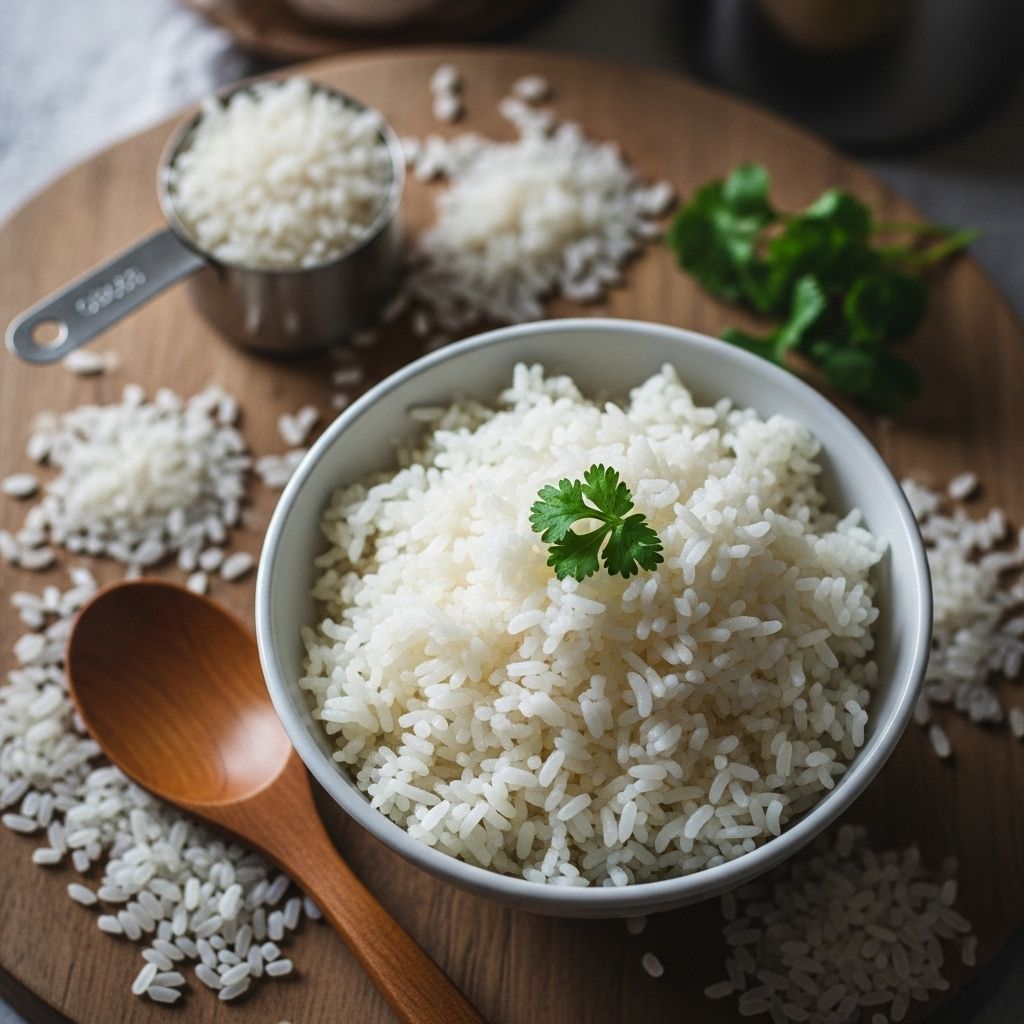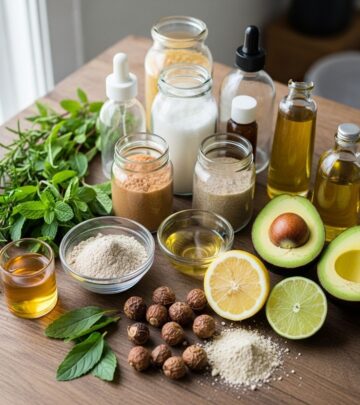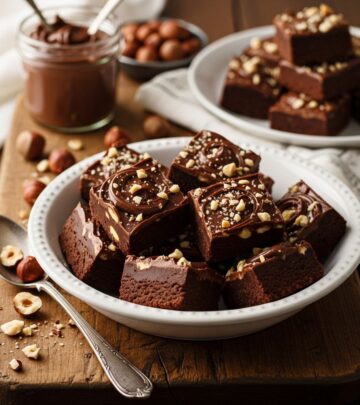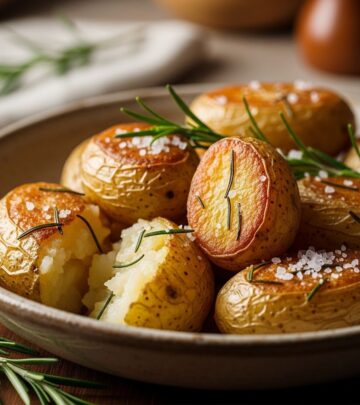How to Cook Rice: The Ultimate Guide for Perfect Grains Every Time
Foolproof cooking methods turn basic ingredients into tender, flavorful staples.

Image: HearthJunction Design Team
Rice is a staple food in kitchens around the world, celebrated for its versatility and simplicity. Yet achieving perfectly fluffy grains can be elusive without the right technique. Whether you’re preparing a quick weeknight dinner or planning a feast, mastering rice is a foundational skill every cook should have. This comprehensive guide walks you through every step, highlights common pitfalls, and answers the most frequently asked rice cooking questions.
Why Cooking Rice Isn’t Hard—But Requires Technique
Let’s dispel the myth: cooking rice is not difficult. Like any recipe, success comes from following a few essential steps and understanding the ways to adapt if something goes astray. There’s no reason to be intimidated—cook with attention, use all your senses, and flawless rice can be yours every time.
What You’ll Need
- Uncooked rice (white or brown, long- or short-grain as preferred)
- Water
- Salt
- Fine-mesh sieve or strainer
- Medium saucepan or pot with a tight-fitting lid
- Paper or clean kitchen towel (for steaming post-cook)
- Fork (for fluffing)
How to Cook White Rice on the Stove
Step 1: Rinse the Rice
Place your measured rice into a fine-mesh sieve. Hold it under cold running water, gently stirring with your hand until the draining water transitions from cloudy to clear. This removes excess starch, preventing the rice from becoming gluey when cooked.
Step 2: Measure and Boil Water
For white rice, use the following ratio for fluffy, well-separated grains:
- 1 cup rice : 1.5 cups water
In a medium pot over high heat, combine the measured water and 1/2 teaspoon of salt for each cup of rice. Bring to a rolling boil.
Step 3: Add the Rice and Simmer
Carefully pour the rinsed rice into your pot of boiling water. Stir briefly to prevent clumping. Wait for the water to return to a gentle simmer, then immediately lower the heat to its lowest setting. Cover the pot securely.
Step 4: Cook Undisturbed
Let the rice simmer, undisturbed—no stirring or peeking!—for about 15 minutes. The trapped steam inside the pot does the work, gently cooking the grains until tender but not mushy.
Step 5: Steam for Maximum Fluffiness
Remove the pot from heat. Lift the lid, then cover the top of the pot with a clean paper towel or kitchen towel, and replace the lid. This absorbs excess moisture, giving the rice a lighter texture. Let steam for 10 minutes.
Step 6: Fluff and Serve
Uncover the pot, remove the towel, and use a fork to gently fluff the rice, separating the grains. Serve as desired.
Troubleshooting White Rice
- Crunchy rice: Add a tablespoon or two of water, cover, and steam over low heat for 5 more minutes.
- Mushy or soggy rice: Next time, use slightly less water or reduce cooking time. Don’t skip the towel/steam step—it helps fix minor moisture excess.
- Rice sticking to the bottom: Make sure to use low heat; stirring during cooking can also cause sticking and gluey texture.
How to Cook Brown Rice
Brown rice is more wholesome than white but takes longer to cook. The method is nearly identical, with a few key adjustments:
- Water ratio: 1 cup rice : 1.75 cups water
- Cook time: Simmer for 35 minutes; let steam for 10 minutes off-heat, covered with a towel
Step-by-step for Brown Rice
- Rinse rice in a fine-mesh sieve until water runs clear.
- In a pot over high heat, combine water and salt. Bring to a boil.
- Add rinsed brown rice. Return to simmer. Reduce to low, cover, and cook undisturbed for 35 minutes.
- Remove from heat. Rest with towel under lid for 10 minutes.
- Fluff with fork. Serve.
How to Cook Rice in the Instant Pot
For those who love effortless cooking, the Instant Pot is a game-changer. It delivers perfectly cooked rice with the press of a button, whether you’re using white, brown, basmati, or jasmine rice.
Basic Instant Pot Rice (White Rice)
- 2 cups white rice (basmati or long-grain)
- 2 cups water
- 1 tablespoon oil
- 1/2 teaspoon kosher salt
- Rinse rice until water runs clear.
- Add rinsed rice, water, oil, and salt to Instant Pot. Stir to combine.
- Lock lid and set valve to “Sealing.” Use the “Rice” function or cook on manual/high pressure for 5 minutes.
- Allow a 10-minute natural pressure release, then quick release any remaining pressure.
- Fluff with a fork and serve.
Rice Cooking Methods Comparison Table
| Rice Type | Water (cups) | Rice (cups) | Cook Time (min) | Rest Time (min) | Notes |
|---|---|---|---|---|---|
| White (stovetop) | 1.5 | 1 | 15 | 10 (steam) | Fluff with fork |
| Brown (stovetop) | 1.75 | 1 | 35 | 10 (steam) | Fluff with fork |
| White (Instant Pot) | 1 | 1 | 5 (pressure cook) | 10 (natural release) | Quick and reliable |
| Brown (Instant Pot) | 1.25 | 1 | 20-22 (pressure cook) | 10 (natural release) | Chewy and nutty |
Tips for Fluffy, Perfect Rice
- Use a good lid. Steam must be trapped for even cooking. Avoid peeking during simmering.
- Always rinse rice. Rinsing gets rid of surface starch for less sticky final results.
- Let it rest. The post-cooking steam-off phase transforms texture from wet to fluffy.
- Measure carefully. Too much water = mush; too little = undercooked.
- Adjust for freshness and type. Older grains and aromatic varieties may need tweaks to water or time.
Rice Variations and Ideas
- Fried Rice: Use leftover cooked rice for classic fried rice. Cool, dry rice yields best results; add oil, aromatics (garlic, ginger, green onion), then toss with veggies, soy sauce, cooked eggs, and protein.
- Seasoned Rice: Try simmering with a bay leaf, star anise, or substituting a portion of water for coconut milk or broth for flavor enhancements.
- Pilaf Method: Sauté uncooked (rinsed, dried) rice in oil or butter before adding water and simmering, for a different flavor and texture profile.
- Sticky Rice: For sushi or Asian dishes, use short-grain rice varieties and do not rinse out all starch.
How to Store and Reheat Rice
- Cool rapidly: Spread cooked rice on a tray to cool quickly. Store in an airtight container in the refrigerator for up to 5 days.
- Reheat carefully: Add a splash of water and cover—heat in the microwave or on the stove until steaming hot throughout.
- Freezing: Cooked rice freezes well. Cool promptly, portion into bags, and freeze for up to 2 months. Reheat directly from frozen with a little water.
Frequently Asked Questions (FAQs)
Q: Do you always have to rinse rice?
A: Yes. Rinsing removes excess starch, leading to fluffier, less sticky rice. It’s especially important for white rice varieties. Some specialty rices for risotto, paella, or sushi are exceptions, where extra starch is desirable.
Q: Why did my rice turn out mushy or undercooked?
A: Typically, mushy rice means too much water or overcooking; undercooked rice needs more water or time. Precisely measure water and avoid stirring rice while cooking.
Q: Can I use broth or other liquids instead of water?
A: Yes! Substitute broth, stock, or coconut milk for water to add depth and flavor. Adjust salt accordingly, as some stocks are salty.
Q: Is the post-cooking steam step really necessary?
A: Absolutely. Covering with a paper or kitchen towel lets excess moisture be absorbed, yielding fluffier, non-gummy grains every time.
Q: How much dry rice do I need per person?
A: Plan on about 1/2 cup uncooked rice (which yields 1 1/2 cups cooked) per serving for a main dish, or 1/3 cup for a side.
Rice Cooking Troubleshooting Chart
| Problem | Likely Cause | How to Fix |
|---|---|---|
| Rice is crunchy/hard | Not enough water or cooked too briefly | Add a splash of hot water, cover and steam 5-10 min more |
| Rice is mushy/gummy | Too much water; overcooked | Use less water next time; always rest rice after cooking |
| Rice is scorched on bottom | Heat too high or too little water | Reduce heat to lowest setting after simmer returns |
| Rice is stuck together | Not rinsed; stirred during cooking | Always rinse; don’t stir after lid goes on |
Conclusion: Mastering Rice, Every Time
By starting with a rinse, measuring water accurately, resisting the urge to peek, and finishing with a steam, you’ll ensure fluffy, perfectly cooked rice every time—whether classic white, nutty brown, or pressed-for-time Instant Pot. With these techniques and troubleshooting tips, rice will become one of your easiest and most reliable kitchen staples.
References
- https://www.delish.com/cooking/a20089653/how-to-cook-rice/
- https://www.delish.com/cooking/recipe-ideas/a25325036/how-to-make-fried-rice/
- https://www.delish.com/cooking/recipe-ideas/a25099892/instant-pot-rice-recipe/
- https://www.delish.com/cooking/recipe-ideas/a61438736/how-to-cook-brown-rice-recipe/
- https://www.delish.com/cooking/a21531231/how-to-cook-brown-rice/
Read full bio of medha deb












